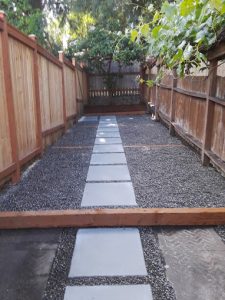Fall Leaf Clean-Up in Seattle: A Step-by-Step Guide
As the fall season settles in, one of the most important tasks for Seattle homeowners is cleaning up fallen leaves. With the right tools and strategy, this process can be quick and efficient, keeping your lawn and garden looking tidy. Here’s an updated guide to performing a fall leaf clean-up, which includes using a tarp for easier collection and disposal fees to consider.
Step 1: Gather Necessary Supplies
Before you start cleaning, make sure you have all the necessary tools:
- Leaf blower (backpack or handheld): A blower is essential for quickly clearing large areas.
- Rake (fan rake or leaf rake): For gathering leaves that the blower misses and for tidying up smaller areas.
- Tarp: A large, sturdy tarp will help collect and transport the leaves with ease.
- Leaf bags or compost bin: For disposal or composting.
- Gloves (optional): Wear gloves for comfort and protection from rough branches or sharp objects.
Step 2: Remove Leaves from Lawn and Gardens
Start clearing your outdoor spaces:
- Blow Leaves: Use the leaf blower to blow leaves off your lawn and out of your garden beds. This is the most efficient way to gather leaves in large areas, especially on grass where they can get stuck in the blades.
- Rake Leaves: After using the blower, use a rake to tidy up areas that the blower missed. Focus on corners or areas where leaves tend to pile up. Use a fan rake for lighter, fluffy leaves and a leaf rake for thicker piles.
- Remove Leaves from Gardens: Gently remove leaves from around your garden plants. Be careful not to damage delicate stems or flowers. If you’re working around mulch or in flower beds, try to lift the leaves without disturbing the soil.
Step 3: Collect and Transport Leaves
- Blow Leaves onto Tarp: Once you’ve cleared the leaves, use the leaf blower to blow them onto the tarp. This makes it easier to gather the leaves all in one spot.
- Rake onto Tarp: Use your rake to collect any stray leaves and add them to the pile on the tarp.
- Drag Tarp: After gathering the leaves, carefully drag the tarp to your designated disposal area or wherever you plan to bag or compost the leaves.
Step 4: Dispose of Leaves
There are a few options for disposing of leaves, depending on what works best for you:
- Leaf Bags: Place the leaves in leaf bags or yard waste bags. Be sure to check the City of Seattle’s regulations for any guidelines about yard waste bags. Note that there is a disposal fee of $3.75 per bag for yard waste collection.
- Compost Bin: If you prefer to recycle the leaves, add them to your compost bin. This is a great way to create nutrient-rich compost for your garden.
- Curbside Collection: Seattle offers curbside collection for yard waste, but be aware that this service may also incur a fee. Costs range from $10-$20 per collection, depending on the service provider.
Disposal Fees
Here’s a breakdown of the typical costs for leaf disposal in Seattle:
- Leaf Bags: The City of Seattle charges $3.75 per yard waste bag for curbside collection.
- Curbside Collection: The price for curbside yard waste collection varies, typically ranging from $10-$20 per collection.
It’s important to check with your local service provider for the exact fees in your area and whether there are specific guidelines for yard waste disposal.
Additional Tips for Leaf Clean-Up
- Leave Some Leaves: Consider leaving a layer of leaves on your lawn, especially in garden beds, as they can act as a natural fertilizer and protect the soil during the colder months.
- Mulch Leaves: You can mulch the leaves and spread them around your garden as a weed barrier and soil conditioner. Many leaf blowers have a mulching function, or you can use a mower to shred the leaves into smaller pieces.
- Check Local Regulations: Before you dispose of leaves, verify the regulations and fees in your area. Some areas may offer free collection during specific times of the year, while others may charge extra for larger quantities of yard waste.
Conclusion
A fall leaf clean-up in Seattle can be easy with the right tools and a solid plan. By using a leaf blower to loosen the leaves, a tarp for efficient collection, and following proper disposal methods, you can keep your yard neat and tidy all season long. Whether you bag the leaves for curbside collection, compost them, or mulch them for your garden, your efforts will help maintain a healthy, vibrant landscape.
Have more questions or need help with your fall yard maintenance? Lee’s General Landscaping is here to assist with your leaf clean-up and other landscaping needs! Contact us for expert advice or to schedule a service. Happy cleaning!



















